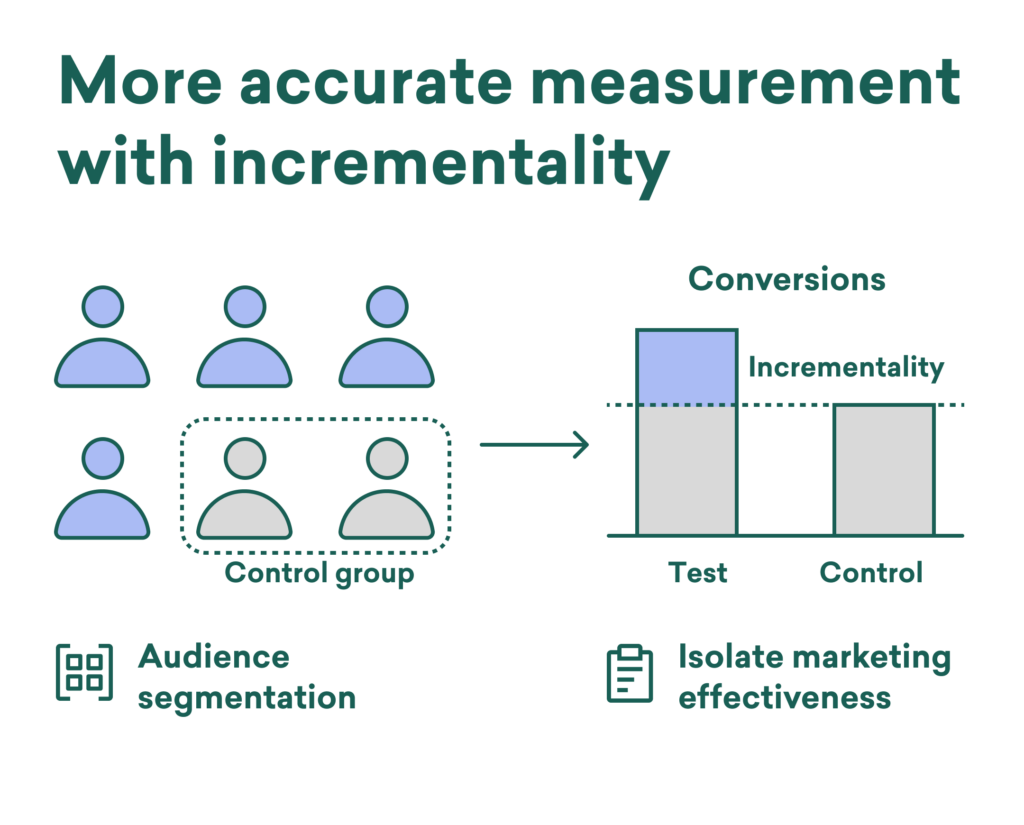Traditional marketing measurement methods, like multi-touch and last-touch attribution offer great insights into brand performance, but may have a tendency to over or under state the impact of marketing campaigns and leave you without a true sense of campaign performance.

Test vs. Control Incremental Measurement.
Test vs. Control analysis is a method of measuring the incremental contribution of marketing that isolates how different external influences (like ads or organic traffic) contribute to your overall business performance. Test vs. Control analysis helps marketers measure the lift of a specific channel by isolating it from all other influences.
By looking at incrementality, marketers are able to better understand how an ad or offer performs by quantifying the lift or isolated contribution, allowing you to measure and reduce wasted ad spend.
How do we measure incrementality at Drop?
When we launch our card-linked offers, Drop selects a randomized control group and withholds the ad or offer from them. We then measure all purchase metrics for this control group customer including, purchases made, total spent, average order value, etc — and compare this to the test group customer (the ones who received the ad or offer). We measure incrementality by quantifying the purchase and spend differences between these test and control group customers.
By measuring incrementality, Drop only takes credit for the incremental contribution of those that were influenced by the ad. This isolates the influence Drop has over your consumers and also helps to quantify the organic traffic or walk-in rate.
What makes Drop’s measurement methods stronger than others?
While many businesses can measure incrementality, it does require advertisers to spend a lot on their own. Card-linked offers give Drop the ability to measure incrementality, without the heavy investment. At Drop, we offer a fully customizable post-campaign analysis which can match the output to the type of lift you want to see.
By measuring incrementality, you can begin to understand the positive impact a marketing initiative has on your business, and scale your business effectively.
Get in touch with our team at sales@joindrop.com to learn more about how Drop can help you measure and scale more effectively with card-linked offers.



